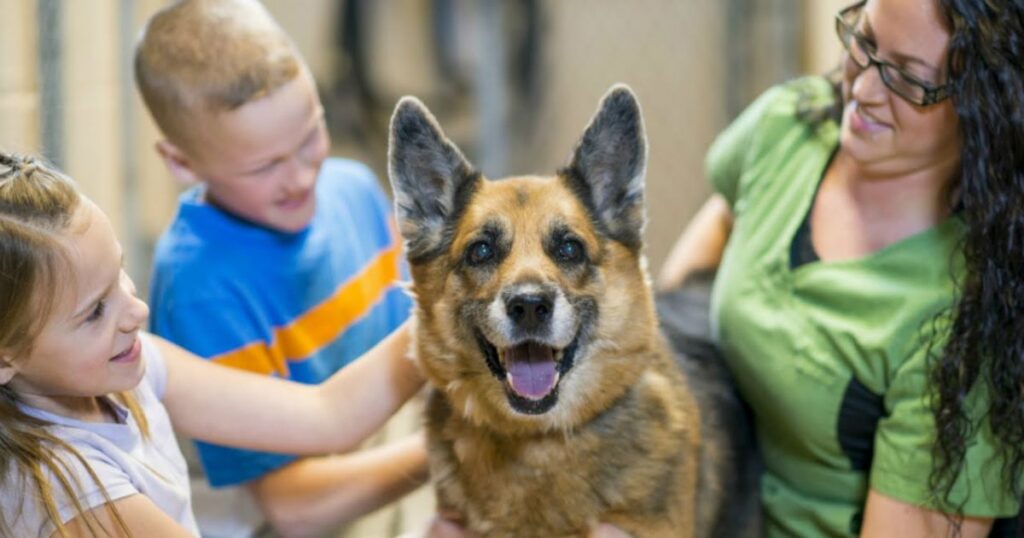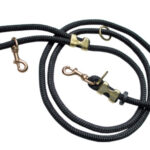Tổng quan
Animal shelters play an essential role in providing refuge, care, and a second chance for animals in need. However, the journey to finding a forever home for these animals is not always easy. Shelters must create environments that support both shelter animals and potential adopters.
One of the key factors in helping animals find homes faster is animal shelter design. When shelters are designed thoughtfully, they can increase adoption rates and improve the experience for both animals and visitors. In this article, we will explore the importance of design in promoting animal adoption awareness.
Architectural Design and Shelter Spaces
The overall architectural design of a shelter impacts its ability to house animals comfortably and encourage adoption. A well-designed shelter can reduce the stress that animals experience in stressful environments. Shelter animals often face fear, anxiety, and loneliness. Architects who understand these psychological needs and physical needs can help create spaces that are calming and safe.
Thoughtful designs, such as soundproofing and resting areas, can make a big difference in an animal’s well-being. For example, shelters with species-specific housing and proper layout design can ensure animals are not overwhelmed by too much noise or visual stimuli.
Shelter design can also help promote socialization and connection with potential adopters. Open spaces with glass walls allow visitors to easily view animals without causing distress. Moreover, modular design elements, like movable partitions and adjustable kennels, allow shelters to accommodate a variety of animals.
This flexibility ensures the shelter can meet the needs of different animals, from small puppies to larger breed-specific accommodations. All of these design choices work together to create a space that is comfortable for animals and welcoming to visitors.
Creating Welcoming Entrances
First impressions matter. When potential adopters enter an animal shelter, they need to feel welcomed and comfortable. A well-designed entrance sets the tone for the entire experience. Reception areas should be inviting and easy to navigate. Clear signage and bright, airy spaces can help guide visitors through the shelter. Interactive displays in the entryway can also educate visitors about the animals, encouraging them to explore further.
The design of the entrance should also consider health and hygiene. The shelter should appear clean and well-maintained to make visitors feel safe and comfortable. A welcoming environment ensures that potential adopters feel at ease and more likely to stay and consider adopting an animal.
Designing Functional Spaces
Functional animal shelter design is essential for both the animals’ well-being and the shelter’s efficiency. For example, kennels and cat rooms must be thoughtfully arranged to allow for easy cleaning and animal care.
By ensuring there is enough space for both animals and staff, shelters can reduce stress for everyone involved. Communal play areas also offer animals the chance to socialize, which can make them more appealing to potential adopters.
Furthermore, the layout of the shelter must allow for effective management. A good design will make it easy to care for the animals and ensure their safety. Shelters should have separate areas for intake, quarantine, and adoption to prevent the spread of diseases. Well-planned ventilation systems and drainage also help maintain a clean and healthy environment for both animals and visitors.
User Experience (UX) Design for Pet Adoption
The user experience (UX) design of an animal shelter directly impacts how easily potential adopters can interact with the shelter and its animals. A simple, intuitive layout is key to improving the adoption process.
For example, seating areas near the kennels provide spaces where visitors can sit and spend time with animals before deciding to adopt. Easy navigation and clear signage can help visitors quickly find the animals they’re interested in.
UX design also plays a role in making the adoption process more efficient. From the first visit to the adoption paperwork, potential adopters should have a smooth and enjoyable experience. A shelter that prioritizes good UX design can increase adoption rates by making the process easy, clear, and enjoyable for all involved.
Simplifying Navigation

In a busy shelter, visitors need to easily find their way around. Simplifying navigation within the shelter is key to making the experience stress-free. By using clear signage, wide hallways, and open spaces, shelters can reduce the confusion that might prevent visitors from spending time with the animals.
A good layout should allow for easy movement from one area to another, whether visitors are looking for kennels, cat rooms, or adoption stations.
Reducing confusion also helps potential adopters connect with the animals. If a visitor can easily find the pets they’re interested in, they’ll likely spend more time with them, increasing the chances of adoption. Easy navigation can also make the shelter feel more welcoming, which is important for creating a positive first impression.
Emotional Engagement Through Storytelling
One of the most powerful ways design can help increase adoption rates is by fostering emotional engagement. Shelters that use design to tell the stories of their animals can create a deeper connection between the animals and potential adopters.
For example, showcasing an animal’s backstory on a wall display or through an interactive screen can help visitors relate to the animal and see them as a family member, not just a pet.
Storytelling is a key tool in promoting adoption awareness. It helps build an emotional connection, which is essential for adoption success. When people understand the challenges and triumphs of an animal, they’re more likely to offer them a loving home. By incorporating design elements that focus on storytelling, shelters can boost the chance of adoption by appealing to the emotions of visitors.
A Great Example: Found My Animal
Found My Animal is a company that understands the role design plays in promoting adoption awareness. They use thoughtful animal shelter design principles in their branding and product designs.
Through natural materials, soft colors, and strong visual communication, they help tell the stories of shelter animals. This approach encourages adoption by fostering emotional connections between the animals and their future families.
Their designs, both in their shelter and in their products, encourage community involvement. They make people feel like they are part of a bigger movement. Shelters can take inspiration from Found My Animal by using design elements that create an emotional bond with potential adopters.
Visual Communication Strategies for Animal Adoption Awareness
Visual communication is essential for animal adoption awareness. Through design, shelters can share key messages that influence adoption decisions. The use of high-quality photography, bold colors, and clear messaging can capture the attention of visitors and encourage them to adopt. For example, vibrant images of animals enjoying their time in the shelter or playing outside can make them more appealing.
Clear, easy-to-read signage and interactive displays also help visitors learn more about the animals they meet. Good visual communication not only informs but also sparks emotional reactions, helping to connect visitors with the animals in need of a home.
The Power of Color and Imagery
Color plays a huge role in creating the right emotional atmosphere in an animal shelter. Soft, calming colors like blues and greens can help reduce anxiety for animals, while vibrant colors can capture the attention of potential adopters. The right imagery can also help tell a story, showing animals in happy and relaxed states.
By using color and imagery thoughtfully, shelters can create an environment that is both comforting for the animals and inviting for visitors. For example, a room with natural light and plants can feel warm and relaxing, making visitors feel more at ease and open to adopting.
Promoting Emotional Connection Through Design
Shelter design has a powerful impact on the emotional connections formed between animals and potential adopters. A space that promotes interaction and comfort increases the likelihood that a visitor will connect emotionally with an animal. For example, a cozy seating area near kennels allows visitors to sit and spend time with the animals in a calm environment.
Emotional connection is key to adoption success. The more time visitors spend with animals in a space that feels safe and welcoming, the more likely they are to feel an emotional bond. This bond often leads to adoption, making emotionally engaging design crucial to the shelter’s success.
The Role of Design in Promoting Animal Adoption Awareness (Continued)

As we’ve seen, animal shelter design plays a key role in promoting adoption awareness. Thoughtful design can increase adoption rates, improve the experience for shelter animals, and help potential adopters feel more connected.
Whether through the layout, the use of color, or the integration of interactive displays, good design can make a big difference. Shelters that invest in their design are more likely to create lasting relationships between animals and their new families.
Case Studies and Real-World Examples
Found My Animal: Leading the Way in Pet Adoption Design
Found My Animal has set the bar high when it comes to adoption awareness through design. Their branding and design principles not only create beautiful products but also connect with people emotionally. Their use of natural materials and strong imagery helps raise awareness and encourage adoption.
Seattle Animal Shelter: A Physical Design Example
The Seattle Animal Shelter offers a great example of how shelter architecture can promote adoption. The shelter’s design prioritizes cleanliness, comfortable spaces, and visitor interaction. It features open kennels, cat rooms, and large windows that allow visitors to connect with animals more easily. This thoughtful design helps create a welcoming environment, increasing adoption rates and improving animal welfare.
Conclusion
Animal shelter design plays a crucial role in promoting adoption awareness. Thoughtful design that focuses on shelter animals’ well-being, enhances the experience for potential adopters, and fosters emotional connections can significantly improve adoption rates.Shelters that invest in compassionate design can create environments that help animals find their forever homes while making visitors feel welcome and engaged.
FAQs
How can animal shelters increase adoption rates through design?
By creating environments that reduce stress for animals, encourage interaction, and engage visitors emotionally.
What design elements can help make an animal shelter more welcoming?
Bright, open spaces, welcoming signage, and comfortable seating areas can make a shelter feel inviting.
Why is storytelling important in shelter design?
Storytelling helps visitors connect emotionally with animals, making them more likely to adopt.
What are some best design practices for increasing animal adoption?
Clear navigation, comfortable spaces, and interactive displays can help increase adoption rates by enhancing the visitor experience.



